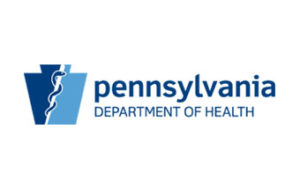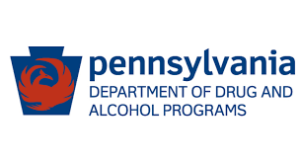PA Health Policy Update for June 30
The following is an update of selected state health policy developments in Pennsylvania from June 26 – 30. (Some of the language used below is taken directly from state documents.)
FY 2023-2024 Budget Update
As of 4:00 p.m. Friday, June 30 Governor Shapiro and the General Assembly have not enacted a final Fiscal Year (FY) 2023-2024 spending plan despite being hours away from the state’s constitutionally mandated deadline. The Senate is preparing to vote on a $45.5 billion spending plan, but the Democratic leaders of the House haven’t signaled support for the measure. Negotiations are ongoing.
Shapiro Administration 
Dr. Val Arkoosh officially became Secretary of the Department of Human Services (DHS) in accordance with the Pennsylvania Constitution this week. Find additional information in this press release issued by the DHS.
Governor Shapiro officially recalled the nomination of Dr. Debra Bogen to serve as Secretary of Health. The recall followed a confirmation hearing held by the Senate Health & Human Services Committee. A recording of the confirmation hearing for Dr. Bogen, as well as Dr. Arkoosh, can be viewed here.
General Assembly
The House and Senate returned to Harrisburg this week for voting session. The following are selected health-related proceedings. Please note the House and Senate remain in session as of 4:00 p.m. Friday, June 30. As a result, this is not an exhaustive list of legislative proceedings.
- The House passed HB 106, “The Patient Safety Act,” on third and final consideration Wednesday, June 28 by a vote of 119 – 84. The bill, which would implement specific nurse-to-patient ratios, was amended on second consideration to decrease the penalties for violations and create a grant program – funded by the penalties paid by hospitals – for nursing recruitment and retention for rural and high Medical Assistance hospitals. The amendment also delays the ability of the Department of Health to impose penalties on rural and high Medical Assistance hospitals for two years and extended the effective date for the remainder of hospitals to one year, instead of six months. The bill now goes to the Senate for consideration.
- The Senate Health and Human Services Committee held a voting meeting Tuesday, June 27 to consider HB 479, which requires both the Medical Assistance Capitation and Fee-for-Service programs to pay for all loaded ambulance miles at $4 per loaded mile beginning on January 1, 2025. A recording of the meeting can be viewed here.
- The Senate Banking and Insurance Committee held a voting meeting Tuesday, June 27 to consider SB 739, which defines telemedicine, offers guidelines outlining who can provide telemedicine services, and addresses insurance company reimbursement for these services. The bill was reported as amended. A recording of the meeting can be viewed here.
- The House Human Services Committee met this week to consider the following bills:
- HB 1515, to extend the current nonnarcotic medication assisted treatment program in the county correctional system to all mediation assisted treatments. The bill was reported as committed.
- HB 1218, which requires the Department of Human Services to submit a waiver to the Centers for Medicare and Medicaid to establish a program allowing spouse caregivers to receive payment for the services they provide. The bill was reported as amended.
A recording of the meeting can be found here.
- The House Human Services Committee is expected to reconvene for a voting meeting Friday, June 30 at the call of the chair to consider HB 876, which requires any entity providing goods or services reimbursable under the medical assistance program to have either a National Provider Identification (NPI) or receive a State Provider Identification number (SPI). The meeting will be held in Room 60 East Wing and livestreamed here.
- The House Aging and Older Adult Services Committee is expected to hold a voting meeting at the call of the chair Friday, June 30 to consider HB 1527 to increase the personal needs allowance deduction for residents of nursing facilities to $60 per month and HR 165 to direct the Legislative Budget and Finance Committee to study the effect of the workforce shortage on State supported Medicaid home and community based waiver programs and the Pennsylvania Lottery funded OPTIONS programs. The voting meeting will be held in Room G-50 of the Irvis Office Building and will be livestreamed here.
Medicaid Continuous Coverage Unwinding
The Department of Human Services (DHS) is maintaining an online dashboard with Medicaid continuous coverage unwinding data. The data on this dashboard tracks the renewal process by county and zip code. Additional updates and resources about the Medicaid eligibility renewal process may be found here.
Department of Human Services
- The Department of Human Services (DHS) has published its annual list of exceptional Durable Medical Equipment (DME) in this Pennsylvania Bulletin notice.
- DHS has issued several Medical Assistance Bulletins related to prior authorization guideline changes. Following are the various bulletins.
- Short-Acting Opioids
- Long-Acting Opioids
- Amyloid-Targeted Monoclonal Antibodies
- Cough and Cold Medications
- Antiemetic and Antivertigo Agents
- Compounded Prescriptions
- Hepatitis C Agents
- Topical Antiparasitic
- Opioid Use Disorder Treatments
- Tepezza (teprotumumab-trbw)
- Progestational Agents
- DHS has issued a Medical Assistance Bulletin with Pennsylvania’s Early and Periodic Screening, Diagnosis and Treatment (EPSDT) program periodicity schedule and coding matrix.
- DHS has issued a Remittance Advice Alert to regarding the department’s delay in implementing Version 38.0 and 39.0 of the APR DRG classification system for Medical Assistance (MA) program enrolled general acute-care hospitals.
- DHS has published revisions to the Participating Drug Company List for the Federal Medicaid Drug Rebate program.
Department of Health 
- The Department of Health (DOH) has published answers to frequently asked questions about new long-term care facility regulations that come into effect on July 1, 2023.
- DOH has provided a staffing ratio calculation tool to assist long-term care facilities planning for compliance with new regulatory requirements as of July 1. Use of the tool is not required but may be useful when calculating the required number of nursing hours as well as the staff ratios. Click here for instructions, which opens in a Word document, and here for the tool, which opens as an Excel spreadsheet.
- DOH has issued a Health Advisory (2023 – PAHAN – 707) to share information and notify clinicians, public health authorities, and the public about locally acquired malaria cases and concern for a potential rise in imported malaria cases associated with increased international travel during the summer.
- DOH has issued a Health Advisory (2023 – PAHAN – 706) to request that clinicians continue to test for influenza in patients with respiratory illness throughout the summer due to the severity of recent human infections with avian influenza A(H5N1).
Stakeholder Events
PHC4 – Council Meeting – July 6
The Pennsylvania Health Care Cost Containment Council (PHC4) will meet on Thursday, July 6 at 10:00 a.m. Find additional information and details on how to participate in this Pennsylvania Bulletin notice.
DOH – Specialty Pharmaceutical Benefits Program – July 20
The next Specialty Pharmaceutical Benefits Program Advisory Council meeting will be held virtually on Thursday, July 20 from 10:00 a.m. to 12:00 p.m. Find additional information and details on how to participate in this Pennsylvania Bulletin notice.
DHS – Medical Assistance Consumer Subcommittee – July 26
The Consumer Subcommittee of the Medical Assistance Advisory Committee (MAAC) will meet on Wednesday, July 26 at 1:00 p.m. Click here to register to participate.
DHS – Medical Assistance Advisory Committee – July 27
The MAAC will meet on Thursday, July 27 from 10:00 a.m. to 12:00 p.m. Click here to register to participate.
DOH – Newborn Screening and Follow-Up Technical Advisory Board – July 27
The Newborn Screening and Follow-Up Technical Advisory Board will hold a public meeting on Thursday, July 27 from 10:00 a.m. until 1:00 p.m. The meeting will be conducted in person. The agenda will include discussions about Board member terms; updates from the Bureau of Family Health; and updates from the Lysosomal Storage Disorders/X-ALD, Cystic Fibrosis, Hemoglobinopathy and Critical Congenital Heart Defects subcommittees. Find additional information and details on how to participate in this Pennsylvania Bulletin notice.


 Department of Human Services
Department of Human Services Department of Drug and Alcohol Programs
Department of Drug and Alcohol Programs Pennsylvania Health Care Cost Containment Council
Pennsylvania Health Care Cost Containment Council General Assembly
General Assembly General Assembly
General Assembly Stakeholder Events
Stakeholder Events
 The Wolf Administration
The Wolf Administration Around the State
Around the State Department of Human Services
Department of Human Services Beginning today, SNAP is expanding its regular COVID-19 updates to encompass a broader scope of Pennsylvania state health policy endeavors. As efforts to address COVID-19 prove more effective and the state moves from focusing almost exclusively on the public health emergency back to its usual, much broader array of health policy concerns, we hope this update will be a useful resource on matters of importance to the hospital community. Please feel free to share this newsletter with others in your organization or to send us the email addresses of those you think might be interested and we will send it directly to them.
Beginning today, SNAP is expanding its regular COVID-19 updates to encompass a broader scope of Pennsylvania state health policy endeavors. As efforts to address COVID-19 prove more effective and the state moves from focusing almost exclusively on the public health emergency back to its usual, much broader array of health policy concerns, we hope this update will be a useful resource on matters of importance to the hospital community. Please feel free to share this newsletter with others in your organization or to send us the email addresses of those you think might be interested and we will send it directly to them. In the Legislature
In the Legislature COVID-19: By the Numbers
COVID-19: By the Numbers